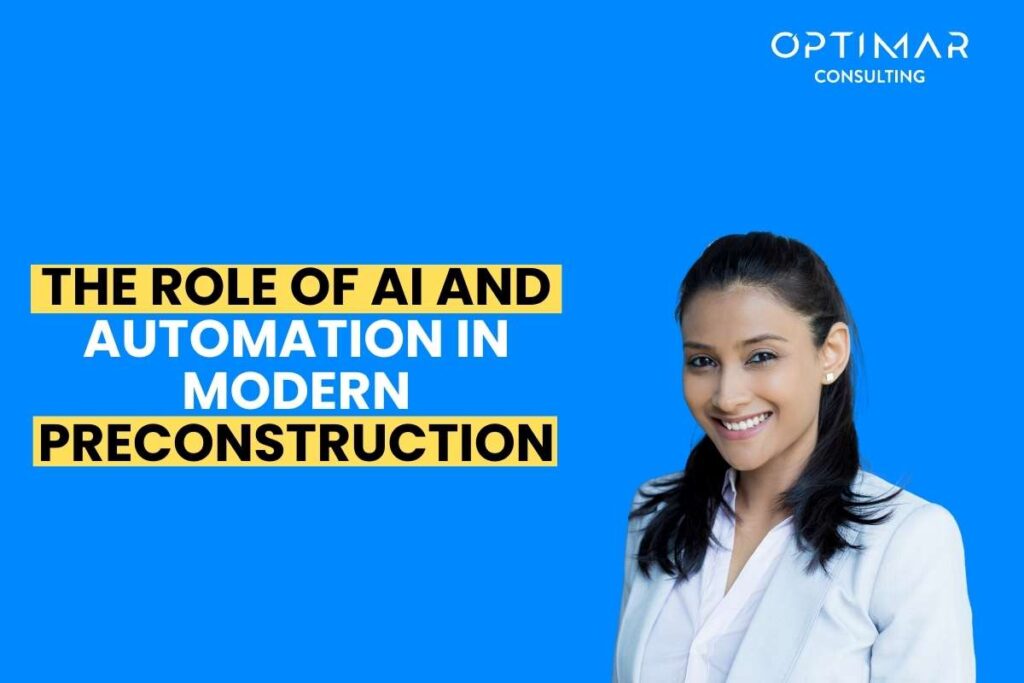
The Role of AI and Automation in Modern Preconstruction
The preconstruction phase is where projects are won or lost. This is the stage where plans, budgets, timelines, and resources are set in motion. In today’s competitive construction industry, AI and automation in preconstruction are no longer optional—they’re a strategic advantage. From precise cost estimation to intelligent scheduling, these tools are transforming how projects are planned, coordinated, and delivered.
What Is Preconstruction and Why It Matters
Preconstruction is the planning stage before the first brick is laid. It includes budgeting, scheduling, risk assessment, and design coordination. By getting this phase right, teams can avoid costly delays and scope changes later.
Traditional preconstruction relies heavily on manual input, which leaves room for human error. This is where AI in construction preconstruction phase and automation shine—reducing mistakes, improving accuracy, and saving time.
How AI Is Changing Preconstruction
1. Enhanced Cost Estimation
AI-powered tools analyze historical project data, material prices, and market trends to provide accurate cost forecasts. This reduces the guesswork that often leads to overruns.
Example: AI can scan hundreds of similar project datasets to recommend realistic budgets within minutes, a process that might take humans days.
2. Intelligent Risk Management
Machine learning models can identify potential risks early—whether they’re related to site conditions, supply chain disruptions, or regulatory hurdles.
This proactive approach ensures risk mitigation strategies are in place before work begins.
3. BIM and AI Integration
Combining Building Information Modeling (BIM) with AI enables dynamic, real-time model updates. Automation in preconstruction means that design changes instantly reflect in cost estimates, timelines, and resource allocation.
How Automation Is Reshaping Workflows
1. Streamlined Documentation
Automation reduces repetitive admin tasks, such as preparing BOQs, bid proposals, and compliance forms. This frees up teams to focus on higher-value activities.
2. Faster Scheduling
Automated scheduling software can generate timelines that account for dependencies, resource availability, and even weather patterns—delivering more accurate plans.
3. Seamless Collaboration
Automation tools centralize communication, ensuring architects, engineers, and contractors work from the same data source. This eliminates version conflicts and misunderstandings.
Benefits of AI and Automation in Preconstruction
- Accuracy – AI-powered analytics lead to more precise budgets and schedules.
- Efficiency – Automation speeds up routine processes.
- Cost Savings – Better planning prevents overruns and wasted materials.
- Informed Decisions – Data-driven insights support strategic choices.
- Competitive Edge – Faster, more accurate proposals win more bids.
Why Choose Optimar Consulting for Preconstruction Support
Optimar Consulting is more than an offshore staffing provider—we’re your strategic partner in delivering AI-driven preconstruction solutions that save time, cut costs, and raise quality standards.
Here’s why leading AEC firms trust us:
- Specialized Talent – We connect you with experienced estimators, BIM specialists, and CAD experts who understand both traditional and AI-powered workflows.
- Technology Expertise – Our teams are skilled in the latest preconstruction software, AI-based estimating tools, and automation platforms.
- Scalable Solutions – Whether you need one specialist or an entire preconstruction team, we scale to meet your project demands.
- Global Cost Advantage – Save up to 70% on operational costs without sacrificing quality.
- Proven Results – With a 96% placement success rate and 92% client retention, we deliver talent and solutions that perform.
- End-to-End Support – From recruitment and onboarding to compliance and payroll, we handle the details so you can focus on building.
Partnering with Optimar means you get more than skilled professionals—you gain a competitive edge in adopting AI and automation for your preconstruction projects.
Challenges and Considerations
While the benefits are clear, adoption requires:
- Training – Teams must understand new tools and workflows.
- Data Quality – AI depends on clean, complete historical data.
- Integration – Ensuring AI and automation systems connect with existing project management platforms.
The Future of Preconstruction with AI and Automation
The future points toward even smarter systems—think AI that predicts market shifts months ahead or automation that runs simulations to identify the most efficient build sequence. Companies that invest now will not only streamline operations but also position themselves as leaders in the AEC industry.
Conclusion
AI and automation in preconstruction are more than technological trends—they’re reshaping the way projects are conceived, planned, and executed. By embracing these tools, construction firms can improve accuracy, reduce costs, and deliver better results for clients.
And with Optimar Consulting by your side, you gain access to world-class talent, advanced technology expertise, and the operational flexibility to stay ahead in the modern AEC landscape.
Frequently Asked Questions
AI in preconstruction refers to the use of artificial intelligence tools to improve planning, estimating, scheduling, and risk analysis before construction begins. These systems process large datasets to deliver faster, more accurate insights than manual methods.
Automation speeds up repetitive tasks like documentation, bid preparation, scheduling, and data entry. This allows project teams to focus on strategy and problem-solving instead of admin work.
Yes. AI-driven cost estimation tools analyze historical data and market trends to create highly accurate budgets, reducing the likelihood of overruns and wasted resources.
Key benefits include improved accuracy, faster decision-making, better risk management, cost savings, and stronger collaboration across project teams.
Absolutely. Even small-scale projects benefit from AI-powered estimating, scheduling, and design coordination, especially when aiming to avoid costly delays.


